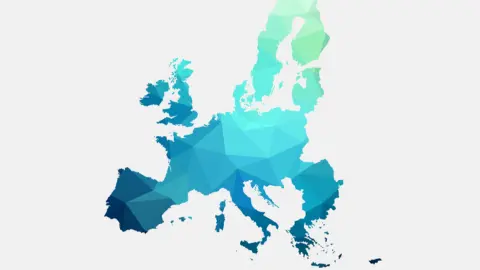Key events in EMEA and Latam next week
The Central Bank of Russia will be in the spotlight next week, with a number of global and local developments pushing the likely timing of a rate cut to next Friday. We suspect the Bank will reinforce its dovish guidance, signalling that further cuts may be on the horizon
Bank of Russia: Key rate cut and reinforcement of dovish guidance
In April, the Central Bank of Russia (CBR) announced that a first rate cut could take place in the second or third quarter this year, but we were unsure about the Bank's ability to make such a cut before September. However, a number of global and local developments has now pushed the likely timing of this to June.
- Global markets are now more confident about the Fed's dovish stance, with the implied probability of a September Fed cut increasing, from 30-50%, to nearly 100%.
- Risks to the rouble exchange rate have so far failed to materialise, as the local currency remained stable in May. This was supported by continuous foreign portfolio inflows into the local state debt market (OFZ) of around $3 billion.
- The local CPI rate has continued to undershoot expectations, decelerating from 5.2% YoY in April to 5.1% YoY in May, and preliminary data for the first week of June suggests a possibility of CPI moving below 5.0% YoY imminently. Households’ inflationary expectations seem to have moderated.
As only a very strong negative external surprise could stop the cut next week, the key question is about the forward-looking guidance. We expect some downward revision in the CBR’s CPI outlook for year-end 2019, which is currently 4.7-5.2% and higher than our 4.6%. This would confirm the mid-term trend in CPI and the key rate. However, a number of risks could still prevent the CBR from aggressively easing.
- The recent $15/bbl drop in the oil price and escalation of US-China trade tensions, combined with the local dividend season, suggest persistent risks to the rouble.
- We are concerned that the May CPI slowdown was driven purely by the slowdown in gasoline prices (from 8.3% YoY in April to 2.8% YoY in May), which may have started to pick up again based on the most recent weekly CPI data. Other components of the CPI basket, including food and services, have shown acceleration in the annual price growth.
- Finally, the slowdown in RUB retail and corporate deposits - evident from the recently released April banking data - suggest that agressive cuts may increase risks of re-dollarisation.
For now, we expect two 25 basis point cuts to take place this year – in June and September, with risks to this view skewed towards more cuts depending on the tone of the CBR guidance.
Czech Republic: Negative base effects will be an inflationary drag
Due to base effects, CPI should decelerate in May. But with some upward price pressures coming through, we suspect this deceleration will be milder than first anticipated, and price levels should actually increase in monthly terms.
Last month we saw an unexpected CPI slowdown to 2.8%, driven mainly by alcoholic beverage prices, but - in light of their volatility - we believe they will increase again in May. Fuel prices also picked up further in May due to moves in oil prices and it's very likely that food prices followed - increasing slightly on a monthly basis, based on preliminary estimates. As such, base effects will be weaker than expected in May. Prices are likely to accelerate by 0.4% MoM, bringing the annual figure to 2.7%. The unemployment rate should decline slightly for seasonal reasons.
EMEA and Latam Economic Calendar

This publication has been prepared by ING solely for information purposes irrespective of a particular user's means, financial situation or investment objectives. The information does not constitute investment recommendation, and nor is it investment, legal or tax advice or an offer or solicitation to purchase or sell any financial instrument. Read more
Download
Download article
7 June 2019
Our view on next week’s key events This bundle contains 3 Articles